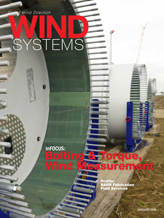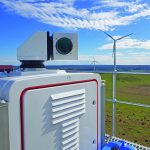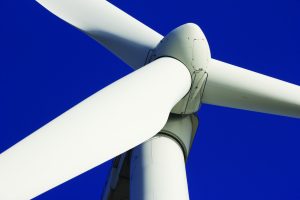There are thousands of bolted connections in each wind turbine. Whether it’s the largest tower bolts or the smallest electrical box connections, every bolt and application has a torque specification. Choosing which tool to use to calibrate those bolts may seem to be the most important decision, but it’s not. For both safety reasons and the long term cost of maintenance of wind turbines, the really critical, but often overlooked, consideration is the quality of the calibration of the torque tool being used. It’s time for the wind industry to standardize the requirement that all torque equipment be calibrated by an ISO 17025 accredited calibration lab.
ISO 17025 already is required by the defense and pharmaceutical industries, and other ones such as the pipeline and transmission industries are considering requiring that standard as well. Due to the fact that wind turbines have large rotating blades hundreds of feet in the air, there is tremendous stress on all bolted connections. When failures have occurred in the past, investigators of the bolts often cite improperly applied torques as the reason for their problems. However, while the investigators may check that the tool used had been calibrated, they have not necessarily looked more deeply to determine how or by whom it was calibrated. Unfortunately, there are many companies/individuals using substandard calibration methods and apply calibration stickers on torque tools and equipment with little or no accreditation behind them. When conducting root cause analysis of a failure, more attention needs to be heeded to the firm that calibrated the torque equipment used on the job during the failure.

The variety of torque tools and equipment used on wind-turbine sites can be large and include hydraulic torque wrenches, ERAD electric torque tools, manual click and dial torque wrenches, and torque measurement equipment such as torque transducers and testers. All of this equipment is subject to measurement, which makes it vulnerable to changes in accuracy. Thus, it should be put into the proper calibration cycle by a properly accredited vendor.
ISO 17025 accredited calibration labs are independently audited by firms such as A2LA or NVLAP that hold them to the strictest quality standards to ensure proper calibration protocols are in place.
Using an ISO 17025 accredited calibration lab ensures the following points:
- All technicians who perform the work pass tests of technical competence to show they are fully qualified.
- All standards used are traceable back to a known calibrated standard.
- The lab has a defined management system in place.
- It has a documented continuous improvement policy.
- There is a proscribed recordkeeping and software management policy.
- They use a corrective action plan when potential non-conformance issues arise.
- They perform ongoing internal audits and maintain a written quality manual.

In addition, it is important that when wind-turbine management sends out its out torque equipment to be calibrated, that it select a high-quality lab to do the work. Here are 10 points to consider when making that selection:
- Is your calibration lab ISO 17025 accredited by a reputable firm such as A2LA or NVLAP?
- Have you checked to ensure that the equipment is on the calibration lab’s Scope of Accreditation? Ask to have the vendor email you its “Scope of Accreditation” for review.
- Have you identified and informed your calibration lab of the interval for calibration?
- Does the tool/equipment that you are using for your torque applications have the range/tolerances to meet your application specifications?
- What are the calibration lab’s measurement uncertainties calculations?
- Are you receiving recall notices for your equipment that you are sending out?
- Are your calibration certs available immediately and on demand via a QR sticker code that the vendor adheres to your equipment?
- Are you receiving the calibration certs in detail to ensure compliance with your set objective (see additional calibration cert information below)?
- Can the lab meet your delivery/timeframe requirement?
- Does the lab have the ability to repair, overhaul, and replace the equipment being serviced?
If your torque calibration vendor cannot produce the above information upon request, you should seriously consider another vendor. The final calibration certification that is returned with the piece of equipment should contain the following information:
- As found/as returned calibration data.
- Pass/fail data of the manufacturer’s or owner’s required tolerances.
- Uncertainty budget of the calibration lab performing the test.
- Environmental factors, such as temperature and humidity, during the testing.
- Standards used, along with the calibration due date of those standards.
- Method used for the calibration per a written standard operating procedure (SOP).
- Calibration certificate document number.
From OEMs to tower installers to service contractors, any group that uses torque equipment should be using ISO 17025 calibrated equipment. This will ensure unwavering traceability all the way back to the source and will result in fewer failures and a safer, less costly environment for the units. That is why it is time to standardize ISO 17025 for the wind-turbine industry.
































